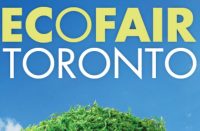This is the Week This Friday!
This is the Week This Friday! 6 quick-and-smart briefs about happenings in the environmental space!
Detrimental Protection- Unmasking the New Way Humans are Polluting the Oceans
Coronavirus has presented a new way for humans to pollute the oceans. Personal protective equipment (PPE) such as single-use masks and latex gloves are being disposed of and washing up along the shorelines. Divers have also been finding them along the sea bed with hand sanitizer bottles in a mixture of regular ocean trash. Plastic pollution already threatens aquatic creatures and these are just new options for sea creatures like turtles to mistake as a new species of jellyfish for a meal. This discovery has also shown that there can be a reverse in the trend of reusable item usage as we are now using single-use plastics to protect ourselves from the COVID-19 virus.
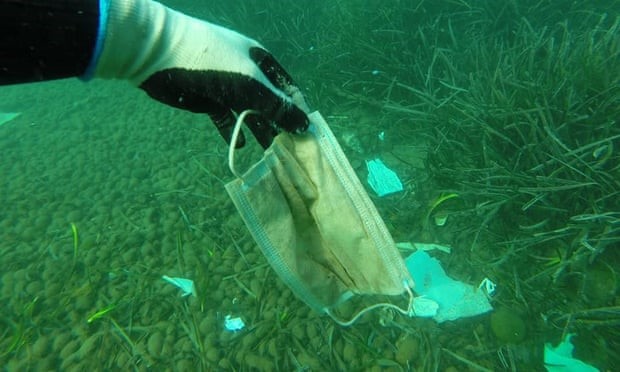
Face masks litter the ocean floor.
Source: Operation Terre-Mer via The Guardian
This year’s theme for World Ocean’s Day (June 8th) is ‘Innovation for a Sustainable Ocean’. University of British Colombia (BC) researchers Orlando Rojas and Johan Foster have been working on prototypes of biodegradable and recyclable masks made using BC wood fibres. When this mask gets on the market, it can help prevent ocean pollution. As well as, prevent the clogging of sewage systems that were due to PPE being flushed down the toilets throughout Canada.
Since this pandemic has no specific end date, may we consider substituting these single-use PPE for options that are reusable and washable. Another option is to simply not discard your waste in an improper manner that will potentially harm any terrestrial or aquatic life. Littering on streets can cause PPE to go into flood drains which lead directly into the oceans. While some are due to windblown dispersal from boats and the landfill – once again humans are the cause of ocean pollution.
Giant Hogweed on the Bloom Again! – How to Avoid Third Degree Burns and Blindness
The giant hogweed are back in bloom again! When out on the trails near rivers, or even in your backyard ensure that you are protecting yourself from giant hogweed. These plants can get up to 5m in height and thrive in most soil which are usually found near the banks of streams and roadside ditches. Poisonous sap from the white bristles, leaves and stalk (sometimes with purple blotches) of the plant can result in third degree burns and painful blisters as it sensitizes the skin to sunlight. Black and purple scars can develop within 48 hours and result in permanent scarring or long-term skin irritations and recurring inflammation. Permanent blindness can even result if the sap gets into contact with your eyes. Yikes!
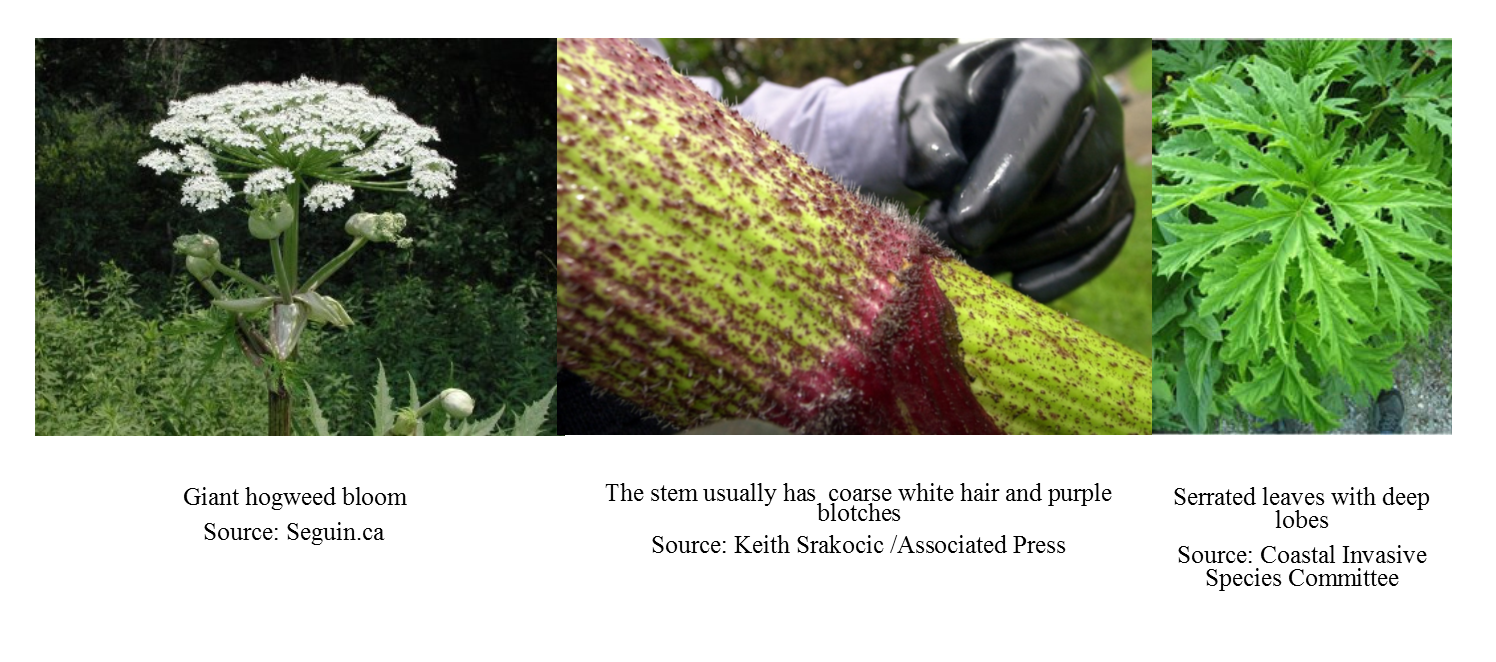
This invasive species which originated in Asia was brought to North America as an ornamental garden plant. What’s even more dangerous is that it can be mistaken for local species such as Cow Parsnip, Angelica and Queen Anne’s Lace. See for yourself.
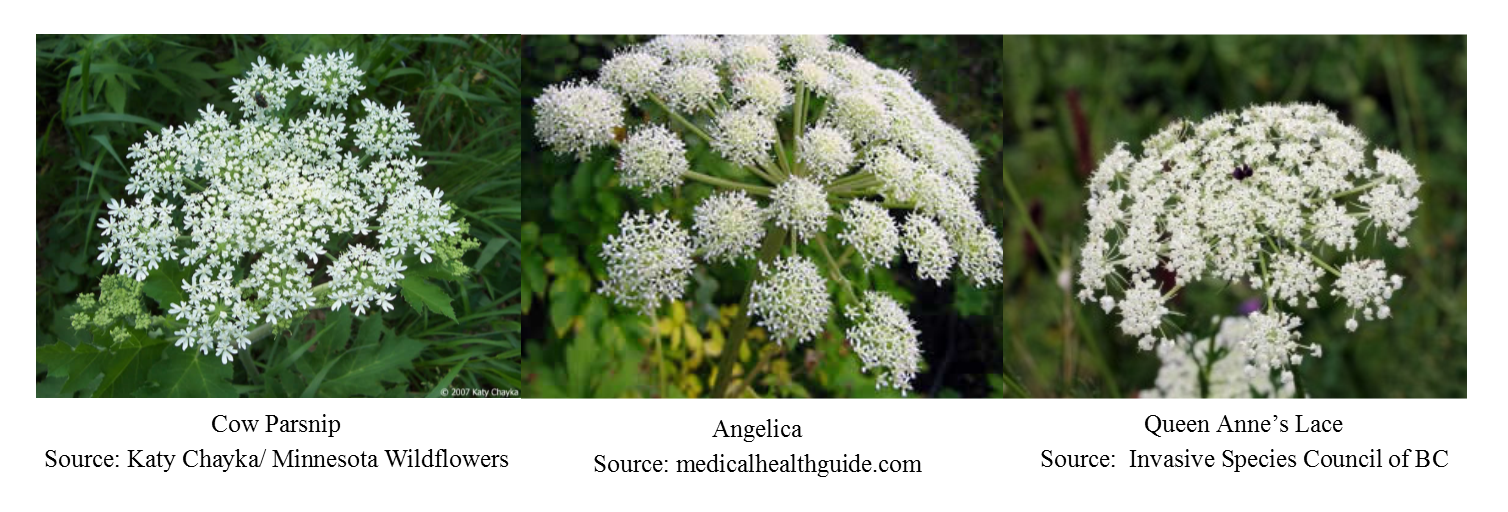
In the unfortunate event that you come into contact with it, keep the area covered from sunlight, wash with cold water and soap and seek medical attention. If removing the plant by digging up or hand-pulling from your property seek expert directions and ensure that no skin exposed including wearing a gloves, safety helmet and masks. If your clothes and equipment are immediately washed thoroughly with soap and water, this will keep you safe. Unfortunately, mowing and weedwacking can stimulate growth and spray sap into the air, respectively. After all weeds weren’t meant to make our lives easier. According to the Nottawasaga Valley Conservation Authority, it is best to leave the plants triple garbage bagged (clear is better than black bags) in the sun for a week to promote liquefying before landfill disposal to avoid further hogweed infestation from seed dispersal.
Help educate others of the danger and how to protect themselves. Giant hogweed sightings can also be reported to Ontario’s Invading Species.
Not Only Us – Coronavirus is also impacting endangered species
Over the past decade, biologist Carlos Ruiz has devoted much of his life to saving golden lion tamarins, also known as those super cute, golden monkeys you’ve probably seen on Animal Planet, or Planet Earth.
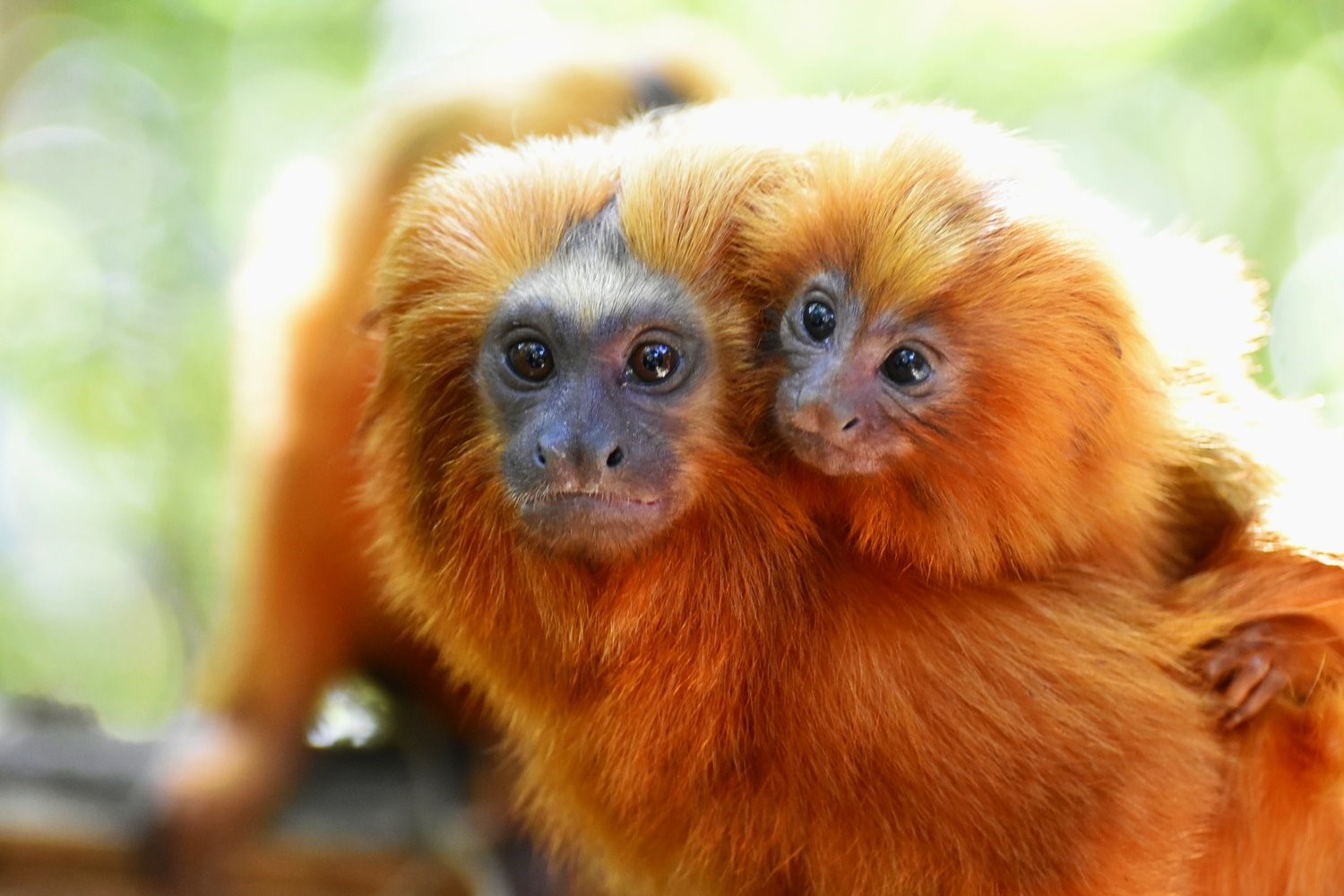
Source: Save the Golden Lion Tamarin
I mean seriously – look at these guys, how can you not love them; I digress. Through massive reforestation efforts in the Amazon, these endangered monkeys were able to be brought back to sustainable levels until a devastating yellow fever hit, wiping out one third of their population in 2018. Ruiz was undeterred by this however and planned an ambitious plan to vaccinate every monkey he could find against this disease.
And then, coronavirus happened. Now this disease isn’t impacting the monkeys themselves, however it is hampering the efforts of Ruiz’s team to vaccinate and protect them. Due to government imposed restrictions, national parks have been closed not only to the general public, but also to researchers such as Ruiz and his team. This means that they have had to suspend their valiant efforts to vaccinate the remaining tamarins before a second wave (how relevant) hits their population.
Unfortunately, while scientists and researchers adhere to the law and have listened to the government, poachers and those who intend on exploiting the rainforest tend to break the rules. This further threatens the population of these lovely golden monkeys.
Breathe easy – Green jobs are on the way
The onset of the coronavirus outbreak has given Canada a unique position to reorganize its economy and energy sector, starting right now. This is according to the new Chair of the Canadian Infrastructure Bank, Michael Sabia, who at a virtual roundtable stated “We need to seize this moment to be creative about how we reposition the national economy for a world that is going to be different, and a very important part of that [effort] is repositioning our economy to be a significantly lower carbon economy”.
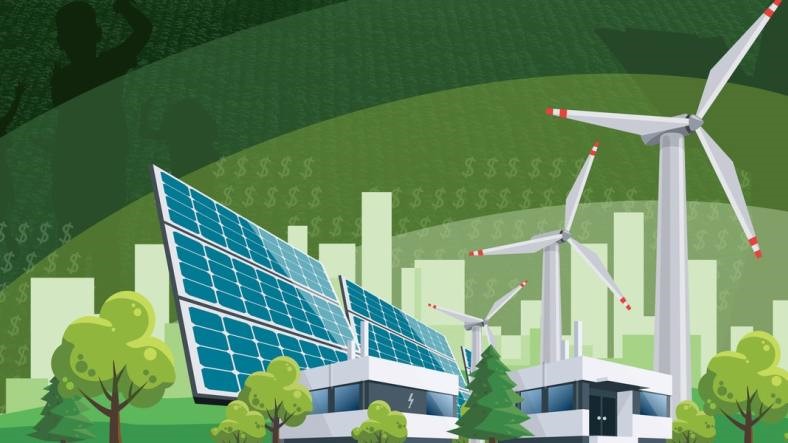
Source: Zobuz
Sabia goes on to say that there is plenty of potential for the bank to invest in green intiatives however the federal Crown corporation has underperformed to use the CIB mandated investment of $35bn by 2027/28. He then follows this up by stating the bank needs to focus less on traditional infrastructure such as ports and roads, and rather invest in stimulus projects to accelerate the energy transition including renewable power and low carbon transportation.
A great quote to come out of this roundtable is by Industry Minister Navdeep Bains, saying that in the same way hundreds of Canadian businesses responded to the need for medical equipment during the pandemic, they must share a similar mindset towards the climate crisis.
Finally, a statement which will give every environmental science student (such as myself) a breath of relief. It has been suggested by authors Ralph Torrie, Céline Bak and Toby Heaps that the federal government allocate $106bn over the next 10 years to create environmental jobs, equating to over 675,000 jobs a year. Next time someone asks you what you’re going to do with your degree, point them to the various calls for boosting the environmental job sector. I know I will!
“Artichoke with Legs”
I would like to introduce you to the Pangolin. No, not Penguin, Pangolin.
Found across Africa and Asia, Pangolins are the most heavily trafficked mammal in the world. Why? Their meat and scales have been used in traditional Chinese medicine for at least 400 years, believed to be a cure for a diverse list of ailments from arthritis to cancer, CANCER! A study published in 1938 claimed Pangolin scales could be used to treat excessive nervousness and hysterical crying in children, women possessed by devils and ogres, as well as malarial fever and deafness. Goodness.
Today, an estimated 200,000 Pangolins are consumed every year in China.
But good news! This week, the Guardian announced that Pangolin scales will no longer be approved for medicinal use in China. This announcement came with a commitment from the Chinese government to protect the endangered species, moving the Pangolin from a Class II to a Class I species under the Wildlife Protection Law.

SOURCE: Rainforest Trust
These announcements are likely in response to the Covid-19 virus. According to the Guardian, Pangolins are one of the two animals known to carry the Sars-CoV-2 virus, the other being bats. In fact, many scientists believe that it was the Pangolin, and not bats, which transmitted the Covid-19 virus to humans.
Can we take this as a sign to stop eating Pangolins?
What a Waste

In the last few weeks, many of us have heard stories about farmers across Canada and the United States afflicted from the by products of the coronavirus. We have seen stories about farmers forced to dump cow milk down the drain, or farms which rely on migrant employees now suffering from labour shortages. This week, the Guardian announced that the coronavirus has now taken its toll on meat plants.
The virus has forced many meat plants to close, the remaining of which are overwhelmed and lack capacity to cater to the new influxes. As a result, many farmers have been left with no other option but to slaughter their own animals to help depopulate their farm.
One way to do this is by gassing the animals with CO2. While this method is approved in Canada, apparently, it is a rough way to go. The other most common options are through overheating or hypothermia, which can take up to an hour to work. Take your pick.
Dwight Mogler, of Iowa’s Pig Hill Farms, did not like either of these options and decided to build his own cull facility to help farmers with no where to send their animals. Mogler said his facility will replicate a slaughterhouse and the animals will be killed in several seconds.
Apparently, the whole ordeal has been ‘traumatizing’ for farmers. You know who is also traumatized? The animals.
Shanella Ramkissoon is a Masters in Environment and Sustainability candidate. Her background is in the field of Environmental Science and Environment and Resource Management. Her interests lie in environmental conservation, especially for marine species such as coral reefs, turtles and dolphins. In her free time, she enjoys landscape photography, baking and art and craft projects.
Alexandra completed her Masters degree in Environment and Sustainability at Western University. She also holds a Bachelor’s of Science from the University of Windsor with Honours in Environmental Studies, where she concentrated in Resource Management and was actively involved in undergraduate research. Outside of academia, she enjoys hiking, camping, and spending her summers on the beach in Prince Edward Island.

Alex has a background in Environmental Science holding an undergraduate degree in Environmental Studies, and a Masters of Environment and Sustainability (MES) from Western University. Alex was born and raised in Barbados, a small island in the Caribbean, and has spent the past seven years attending school in Canada, while returning to Barbados for the summer and Christmas periods. Alex is passionate about the environment as he has been able to witness firsthand the effects of climate change on marine and tropical environments, and hopes to spread awareness about these issues.



